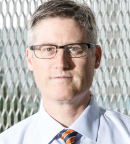Each year, nearly 90,000 adolescents and young adults (AYAs; aged 15–39) are diagnosed with cancer, and approximately 9,300 die of the disease.1 And although the 5-year survival rate among these young patients is approaching 80%, it lags behind that of the pediatric population, whose 5-year survival rate is approximately 85%.2 In addition, outcomes have remained stagnant for many AYA cancer diagnoses, including sarcomas and central nervous system (CNS) tumors.3 Furthermore, AYAs are at increased risk for developing adverse long-term side effects from cancer and/or its treatment, including chronic conditions, secondary cancers, infertility, poor psychosocial health, and financial toxicity.
For AYAs with advanced cancer, the emotional and physical toll of the disease can be especially daunting and may include fatigue, pain, and difficulty sleeping, significantly impacting their quality of life; disruptions in critical developmental life milestones, exacerbating feelings of sadness, anxiety, and social isolation; and psychological challenges, including heightened levels of depression and fear of cancer recurrence.
The findings from a recent randomized phase III clinical trial investigating a novel resilience coaching intervention for AYA patients with advanced cancer are showing promising results in improving feelings of resilience and hope, as well as longer-term improvement in quality of life for these patients.4 The study, conducted by Abby R. Rosenberg, MD, MS, MA, Chief of Pediatric Palliative Care at Dana-Farber Cancer Institute and Director of Palliative Care at Boston Children’s Hospital, and colleagues, tested the Promoting Resilience in Stress Management in Advanced Cancers (PRISM-AC) intervention compared with standard pediatric psychosocial usual care. It focused on 195 AYAs (aged 12–24) diagnosed in the previous 2 weeks with advanced cancer, defined as progressive, recurrent, refractory, or with a less than 50% expected overall survival. Among the trial participants, 37% were diagnosed with leukemia or lymphoma, 42% had solid tumors, and 21% had CNS tumors.

The patients in the PRISM arm...continued to see improvements in their mental health and quality of life over the next year.— ABBY R. ROSENBERG, MD, MS, MA
Tweet this quote
The PRISM-AC program consists of four core sessions delivered by a lay coach and targets AYA-endorsed “resilience resources,” including skills in stress management, goal setting, cognitive reframing, and meaning-making. It also includes a family meeting during which patients can share what helped to reinforce these skills, plus an optional session focused on elements of advance care planning, such as communication preferences and priorities. The participants completed surveys at baseline and at 3, 6, 9, and 12 months after enrollment.
The results showed that at 3 months, the PRISM-AC intervention group reported significantly improved resilience and hope compared with the patients who received usual care, although there were no significant differences in quality of life, anxiety, or depression. As the study continued, however, the PRISM-AC participants reported progressive improvements in quality of life and anxiety compared with the usual-care group. And by 9 to 12 months, the intervention group also appeared to participate more in key health-care decisions.4
In a wide-ranging interview with The ASCO Post, Dr. Rosenberg discussed the psychosocial impact of cancer on AYA cancer survivors, the results of the PRISM-AC study, and how AYA survivors are able to cope with having a terminal prognosis.
Understanding the Consequences of Cancer on AYAs
Before we discuss the findings from your PRISM-AC study, please explain the psychosocial impact of cancer on AYA cancer survivors.
We are continuing to learn about the consequences of cancer on AYAs. What we know is that for these young survivors, a cancer diagnosis interrupts their critical developmental life stages, impacting their physical, psychosocial, and emotional well-being. This disruption may impact their identity formation, social relationships, education, and professional career as well as hinder their transition to adulthood and becoming independent. They may have fewer opportunities for career advancement, make less money, and have a more difficult time building social relationships.
That doesn’t mean these young survivors are not resilient. They often still lead incredibly happy and meaningful lives. To me, the key consideration is that the stressors of having cancer at this age compared with at an older age are enormous. I want to find ways to make the diagnosis less hard.
Thriving During Survivorship
Please talk about the PRISM skills-based coaching program, which comprises four 30-to-60-minute, one-on-one sessions, plus a facilitated family meeting. What is discussed at these sessions?
In its original form, the PRISM program included the four core sessions plus the optional meeting with the family and a coach. Those core sessions were developed in partnership with AYAs over a decade ago and are based on what they told us was important to them. For example, learning stress management techniques, such as deep breathing and mindfulness, is the focus of the first session. The second session is on setting specific, measurable, actionable, and realistic goals. The third session emphasizes cognitive reframing, a technique that helps patients reappraise how they perceive and react to stressful situations. And the fourth core session centers around helping people identify what matters most to them and what they are grateful for even in hard times.
All of these skills have been validated as helpful in coping with stress and adversity. What we’ve learned from previous studies among AYAs with newly diagnosed cancer is that delivering all four of these sessions in a reproducible, lay-coach setting—with or without the facilitated family meeting—translates to improvements in resilience, hope, quality of life, and psychological distress when compared with usual care.
Together, both AYAs and their parents are struggling, and advance care planning provides an opportunity to help.— ABBY R. ROSENBERG, MD, MS, MA
Tweet this quote
Perhaps more relevant to this recent PRISM-AC trial was this: AYAs who received the PRISM intervention and then experienced a relapse or disease progression told us they wanted even more PRISM sessions. Specifically, they said the PRISM intervention helped them set goals and identify what mattered most to them, and now they needed help applying those skills to talk to their family and clinicians about treatment choices and preferences for end-of-life care.
I listened to those comments and thought what these patients are asking for is essentially the same service we offer in palliative care, which is advance care planning. So, in the current PRISM-AC study, in addition to the four core sessions and the family meeting, we included a sixth module that integrated concepts in advance care planning to help AYAs with advanced cancer set goals and make their wishes known for their end-of-life care.
Building Feelings of Resilience and Hope in AYAs
Your results from the PRISIM-AC study showed that at 3 months, participants reported significantly improved resilience and hope than AYAs receiving usual care, but there were no significant differences between study arms in terms of quality of life, anxiety, or depression. However, there were significant improvements in quality of life, depression, and anxiety in the PRISM group at 6 and 12 months, and as more time went by, AYAs participated more in their key health-care decisions. Please talk about this finding. And how old were the AYAs who felt more comfortable in their health-care decision-making, including end-of-life care?
What the study results showed is that the AYAs who received the intervention experienced immediate improvements in their feelings of resilience and hope. What I suspect, and we don’t know this for sure, is that as time went on, these AYAs continued to hone those skills. That’s why we saw the continued impact of those skills at 6, 9, and 12 months.
What is really important from the findings of this study is that at 6, 9, and 12 months, the patients in the usual-care arm of the study had scores that bounced all over the place. What that tells me is these patients were still struggling with their cancer diagnosis, and they had some good and bad days. But the patients in the PRISM arm had developed a more stable foundation in their resilience and hope skills, and that’s why they continued to see improvements in their mental health and quality of life over the next year.
In terms of age, on average across both groups, patients were about 16.5 years old. What we found after looking through palliative care notes in patients’ medical records is that over time, AYAs in the PRISM group were more likely to directly participate in their clinical care and share their opinions about that care, whereas the AYAs in the usual-care group often continued to defer to their parents for treatment and end-of-life care decision-making.
Understanding Prognosis
All AYAs in the study had advanced cancer. How were these young patients able to come to terms with having a terminal disease at such a young age?
This is such an important question, but we did not ask that question explicitly in this study. What we know about pediatric and AYA patients is that they very often understand their prognosis and the concept of death. We know that children with terminal illnesses who are as young as 8 years old understand they are likely to die of their disease.
Guest Editor

Brandon Hayes-Lattin, MD, FACP
Brandon Hayes-Lattin, MD, FACP, is Professor of Medicine, Deputy Division Head of Hematology and Medical Oncology, and Director of the Adolescent and Young Adult Oncology Program at the Knight Cancer Institute at Oregon Health and Science University, Portland.
What we also know is that young individuals, and AYAs in particular, tend to want to protect their loved ones from these difficult conversations. They rarely admit out loud that they know they are going to die. Instead, they are more likely to verbalize their hopes, for example, that the next medicine will work, that God will help them, or that they will defy the odds.
What is impressive about caring for these young patients, in addition to their incredible sense of resilience and hope, is they articulate their prognostic understanding in a slightly different way from older adults. For example, rather than saying, “I know I’m going to die and my time is short,” they may say, “I really want to be home with my family and my dog,” or “I’m engaged to be married, and it’s important for me to get married now rather than wait.” They will make these poignant comments from which you can intuit that they understand their prognosis.
What’s especially touching about this situation is that parents also want to protect their children, and so they often avoid the hard talks in an effort to prevent additional distress. Together, both AYAs and their parents are struggling, and advance care planning provides an opportunity to help.
It is such a privilege to care for these incredible people.
DISCLOSURE: Dr. Rosenberg reported no conflicts of interest.
REFERENCES
- Miller KD, Fidler-Benaoudia M, Keegan TH, et al: Cancer statistics for adolescents and young adults, 2020. CA Cancer J Clin 70:443-459, 2020.
- Janardan SK, Wechsler DS: Caught in the in-between: Challenges in treating adolescents and young adults with cancer. JCO Oncol Pract 17:299-301, 2021.
- Itzep N, Roth M: Psychosocial distress due to interference of normal developmental milestones in AYAs with cancer. Children (Basel) 9:309, 2022.
- Rosenberg AR, Fladeboe KM, Zhou C, et al: Promoting resilience in stress management: A randomized controlled trial of a novel psychosocial intervention for adolescents and young adults with advanced cancer. JCO Oncol Pract. April 28, 2025 (early release online).

